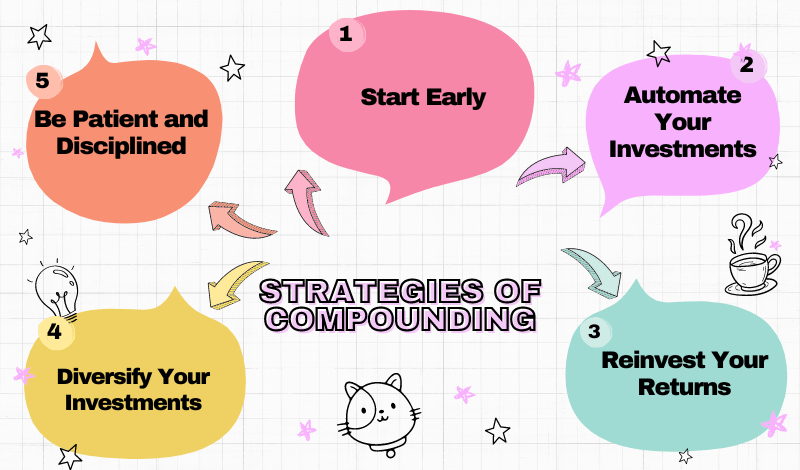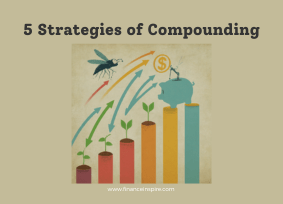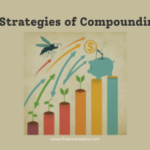
Compound Interest: The Eighth Wonder That Can Unlock Your Financial Future
Do you know why compound interest is often referred to as the “eighth wonder of the world”? It’s a phrase attributed to Albert Einstein, who famously said, “Compound interest is the eighth wonder of the world. He who understands it, earns it; he who doesn’t, pays it.”
At first glance, it might seem like a bold claim, especially when you consider the other seven wonders of the ancient world – the Great Pyramid of Giza, the Hanging Gardens of Babylon, the Temple of Artemis, the Statue of Zeus at Olympia, the Mausoleum at Halicarnassus, the Colossus of Rhodes, and the Lighthouse of Alexandria. These were awe-inspiring feats of engineering and architecture that have stood the test of time.
However, when you delve into the mechanics of compound interest and its far-reaching implications, you’ll soon realize why Einstein held it in such high regard. Compound interest is a financial phenomenon that has the power to transform small sums of money into staggering fortunes over time, making it a true marvel of the financial world.
In this blog post, we’ll explore the concept of compound interest, its history, and why it’s considered one of the most powerful forces in finance. We’ll also discuss Strategies of Compounding to harness its potential and dispel some common misconceptions surrounding it.
Understanding Compound Interest
At its core, compound interest is the interest earned on interest. It’s a deceptively simple concept, but one that can have profound consequences, both positive and negative, depending on how it’s applied. Strategies of Compounding come into play when you understand how to leverage compound interest to your advantage over the long run.
Let’s break it down:
– Simple interest is calculated on the principal amount only.
– Compound interest, on the other hand, is calculated on the principal amount plus any interest that has accumulated over time.
This seemingly minor difference is what gives compound interest its extraordinary power. As the interest accumulates and gets added to the principal, it creates a snowball effect, with the balance growing at an ever-increasing rate. Strategies of Compounding involve understanding and leveraging this snowball effect to maximize growth over time.
To illustrate this, let’s consider two scenarios:
1. Simple Interest: You deposit $10,000 into a savings account that pays 5% simple interest annually.
– Year 1: Interest earned = $10,000 x 0.05 = $500
– Year 2: Interest earned = $10,000 x 0.05 = $500
– Total interest earned after 2 years = $500 + $500 = $1,000
2. Compound Interest: You deposit $10,000 into a savings account that pays 5% compound interest annually.
– Year 1: Interest earned = $10,000 x 0.05 = $500; Balance = $10,000 + $500 = $10,500
– Year 2: Interest earned = $10,500 x 0.05 = $525; Balance = $10,500 + $525 = $11,025
– Total interest earned after 2 years = $500 + $525 = $1,025
As you can see, the difference between simple and compound interest might seem insignificant initially, but it becomes more pronounced over time. This is the essence of why compound interest is so powerful – it allows your money to grow exponentially, rather than linearly. Strategies of Compounding involve taking advantage of this exponential growth by letting your money compound over long periods.
A Brief History of Compound Interest:
While the concept of compound interest might seem like a modern financial innovation, its roots can be traced back to ancient civilizations. The earliest known reference to compound interest dates back to the Babylonian era, around 1700 BCE, where it was used in agricultural and business transactions. Strategies of Compounding have been employed by civilizations throughout history, as they recognized the power of letting money grow over time through compounding.
However, it wasn’t until the 17th century that compound interest gained widespread recognition and application. In 1634, German mathematician and astronomer Johannes Kepler published a work titled “The Value of Annual Rents” (Ingressus et Regressus), which is considered one of the earliest comprehensive treatises on compound interest and Strategies of Compounding.
Over the centuries, compound interest has played a pivotal role in the development of modern finance, banking, and investment strategies. It has enabled individuals and institutions to accumulate wealth, fund long-term projects, and plan for the future. Strategies of Compounding have become an integral part of financial planning and wealth management, allowing people to maximize the growth potential of their investments and savings.
The Power of Compounding:
Now that we’ve covered the basics of compound interest and its historical significance, let’s dive deeper into why it’s considered so powerful and explore Strategies of Compounding.
- Time is Your Greatest Ally: The earlier you start investing and allowing compound interest to work its magic, the more significant the results will be. Even small contributions made early in life can grow into substantial sums over time. This is why financial advisors often stress the importance of starting to save and invest as early as possible, and implementing Strategies of Compounding from a young age.
- It Transcends Asset Classes: Compound interest isn’t limited to traditional savings accounts or fixed-income investments. It applies to a wide range of asset classes, including stocks, real estate, and even cryptocurrency. As long as the investment generates returns that are reinvested, the power of compounding can take effect. Strategies of Compounding can be applied across various asset classes to maximize growth potential.
- Exponential Growth: Compound interest is often referred to as “the most powerful force in the universe” because of its exponential growth. Unlike linear growth, which progresses at a constant rate, exponential growth accelerates over time, creating a snowball effect that can lead to truly staggering results. Strategies of Compounding aim to take full advantage of this exponential growth by maximizing the compounding periods and reinvesting returns consistently.
- Passive Income Generation: Compound interest allows you to generate passive income by letting your money work for you. As your investments grow, so do the returns, creating a self-perpetuating cycle of wealth accumulation. Strategies of Compounding can help you maximize this passive income generation by optimizing your investment approach and reinvestment strategies.
- Consistency is Key: While the power of compound interest is undeniable, it’s important to note that consistency is crucial. Regular contributions, even small ones, can have a significant impact over time due to the compounding effect. Strategies of Compounding: Consistency is key when it comes to compounding. By making regular contributions, even small amounts, you can harness the power of compounding interest to grow your investments over time.
Strategies for Harnessing Compound Interest:
Now that you understand the significance of compound interest, it’s essential to develop strategies to harness its potential. Here are some tips to get you started:
- Start Early: As mentioned earlier, the earlier you start investing and allowing compound interest to work its magic, the better. Even small contributions made in your 20s or 30s can grow into substantial sums by the time you reach retirement age.
- Automate Your Investments: One of the best ways to ensure consistency is to automate your investments. Set up automatic transfers from your checking account to your investment accounts, making it effortless to contribute regularly.
- Reinvest Your Returns: To fully leverage the power of compound interest, it’s crucial to reinvest your returns instead of withdrawing them. This allows your money to continue growing at an accelerated rate.
- Diversify Your Investments: While compound interest can work across various asset classes, it’s important to diversify your investments to mitigate risk and maximize potential returns.
- Be Patient and Disciplined: Compound interest takes time to work its magic. It’s essential to be patient and disciplined, resisting the temptation to withdraw your funds prematurely or make impulsive decisions.
Debunking Common Misconceptions:
Despite its widespread recognition and effectiveness, there are still some common misconceptions surrounding compound interest that need to be addressed:
- Myth: Compound Interest is Only Relevant for Long-Term Investments: While it’s true that the longer the investment horizon, the more significant the impact of compound interest, it can still be beneficial for short-term investments. Even a few years of compounding can make a noticeable difference in your returns.
- Myth: Compound Interest is Too Complicated: The underlying concept of compound interest is straightforward – interest earned on interest. While the calculations can become more complex for advanced scenarios, the basic principle is easy to understand and apply.
- Myth: High Returns Are Necessary for Compound Interest to Work: While higher returns certainly accelerate the compounding effect, even modest returns can yield impressive results over time, thanks to the power of compound interest.
- Myth: Compound Interest is Only for the Wealthy: Compound interest can benefit individuals at all income levels. Even small, consistent contributions can grow significantly over time, making it a powerful tool for building wealth regardless of your financial situation.
Conclusion: Strategies of Compounding
As you can see, there are compelling reasons why compound interest is often referred to as the “eighth wonder of the world.” Its ability to transform small sums into substantial fortunes over time is truly remarkable, and understanding its mechanics and implementing Strategies of Compounding can provide a profound advantage in building wealth and securing your financial future.
Whether you’re just starting your investment journey or have been investing for years, embracing the power of compound interest and implementing Strategies of Compounding can be a game-changer. By starting early, contributing consistently, and letting your money work for you, you can unlock the full potential of this financial phenomenon and set yourself on a path toward long-term financial success.
So, take the time to understand compound interest, develop Strategies of Compounding to harness its power, and let this eighth wonder work its magic in your financial life. Remember, as Einstein famously said, “He who understands it, earns it; he who doesn’t, pays it.”










